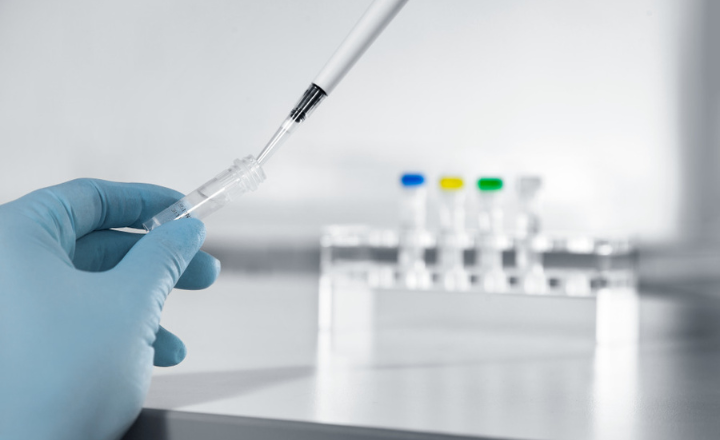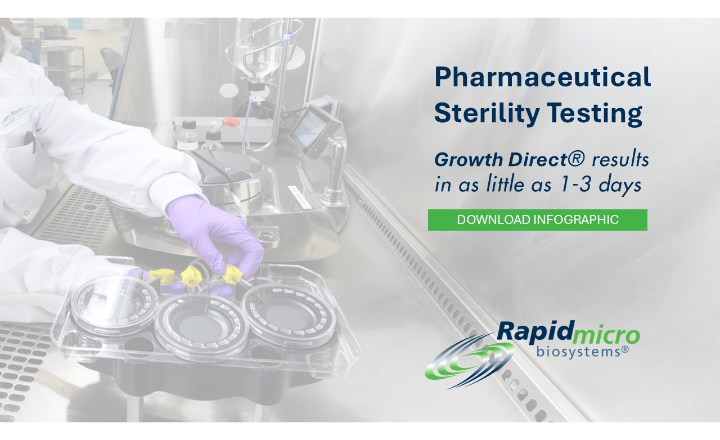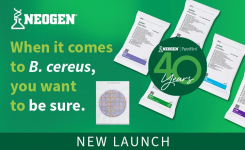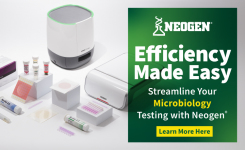
The use of rapid test methods that provide fast, reliable results are becoming more commonplace within microbiology laboratories. Greater efficiency, time saving, automated reporting and better use of resources are just some of the benefits.
Neogen Europe’s Business Development Manager, Frederic Martinez, comments: “We understand the need for faster product release without compromising on product safety. As part of our own R&D evaluation we looked at the performance of the Soleris® method for sterility testing of UHT milk and the results were encouraging.”
Following its own internal evaluation, Neogen supported a six-month long study performed by the French dairy technical center of Actalia Cecalait in Poligny, France. The aim of the study was to evaluate the Soleris method in parallel with the routinely used resazurin test and the official method (European Directive 92/46) for ultra-high temperature (UHT) milk testing. Tests were performed, in this instance, on semi-skimmed UHT milk.
Mr. Martinez continues: “Currently industrial laboratories routinely use the resazurin test to verify UHT milk sterility which can take up to five days for results. The alternative official method is a total plate count following sample incubation for 15 days and therefore cannot be routinely used. We wanted to see if there was a credible alternative here.”
Study Procedure and Methods
Soleris method: A 5 mL sterile sample was taken from milk pre-incubated for two and three days at 30°C. The sample was then inoculated into a NF UHT Medium vial and placed into the Soleris instrument, pre-set at 30 +/- 1°C for a maximum of 48 hours.
Resazurin test: Milk was pre-incubated for five days at 30°C, a 2.5 mL sample was taken and added to 0.5 mL of resazurin at 0.005%. Readings were performed after 4 hours 30 minutes at 30°C. In the event of a positive result, the blue or blue-purple colouration turns pink to white.
Official method: A 0.1 mL sample was taken from milk pre-incubated for 15 days at 30°C and inoculated on to two PCA (Plate Count Agar) dishes and incubated for three days at 30 +/- 1°C. A result below 10 CFU per 0.1 mL (< 100 CFU/mL) is considered negative. For the purpose of the study, tests were also performed after three and five days of milk pre-incubation.
The study evaluated the Soleris NF-TVC medium vial. NF TVC is highly sensitive and designed for sterility testing in UHT products to determine the level of bacteria. The vial can also be used for total viable counts. The NF-TVC vial allows for greater inclusivity with a shorter detection time in sterility testing allowing quicker release of negative batches.
The results of the evaluation showed that Soleris enabled results equivalent to the resazurin test to be obtained after two or three days of UHT milk pre-incubation and 24 hours detection in the detection system, versus five days for the resazurin test or 10-14 days with traditional plate counts.
Patricia Rollier of Actalia Cecalait Microbiology Laboratory comments: “The Soleris method was found to be easy to implement and optical reading and interpretation of the results are performed automatically without the need for visual assessment, opposed to the resazurin test. Results obtained are plotted, and a growth curve allows additional information to be obtained for the interpretation of results.”
Soleris can be used for all types of UHT milk such as white, flavoured or supplemented while the resazurin test cannot be used on flavoured milks and certain types of supplemented milks.
To request a copy of the full Soleris Method for Sterility Testing of UHT Milk Study please tel +44 (0) 1292 525 625 or use the green "Request Information" button below.
























